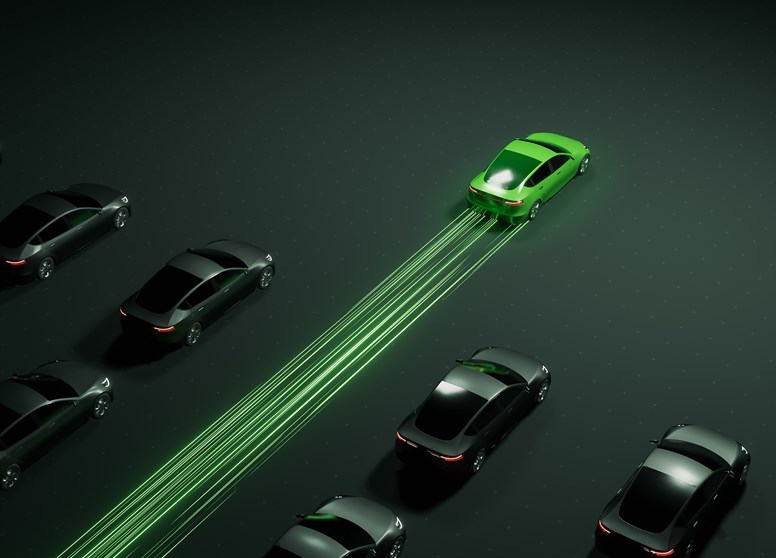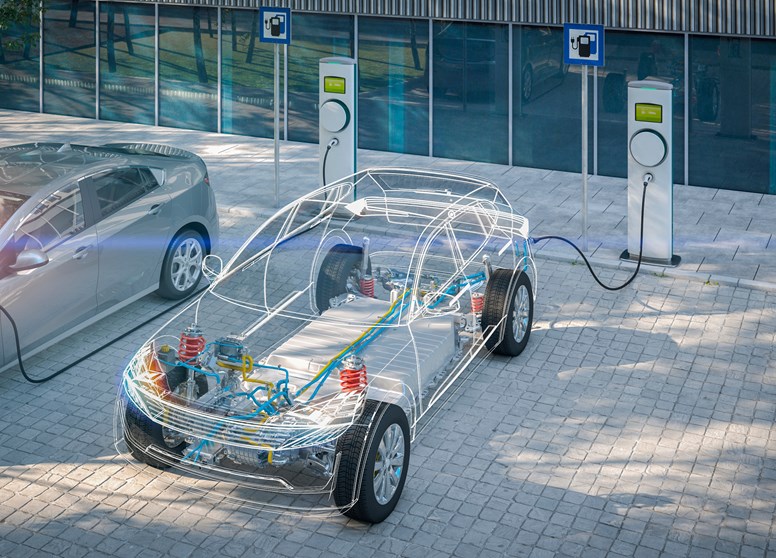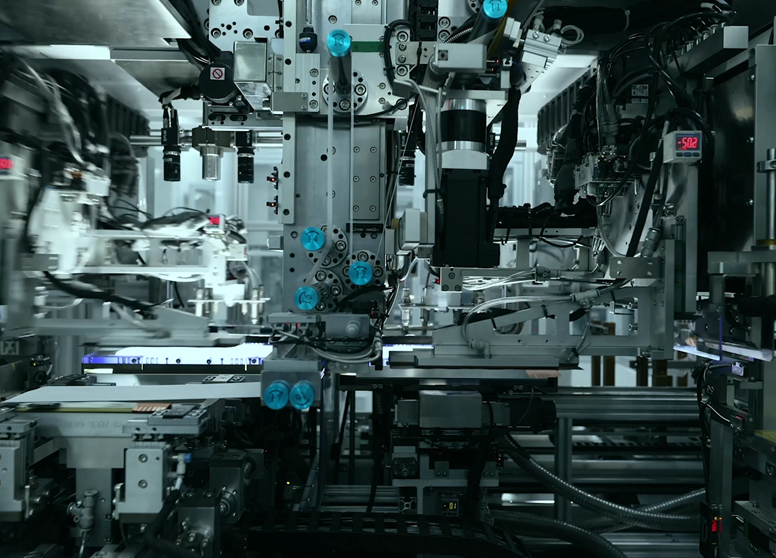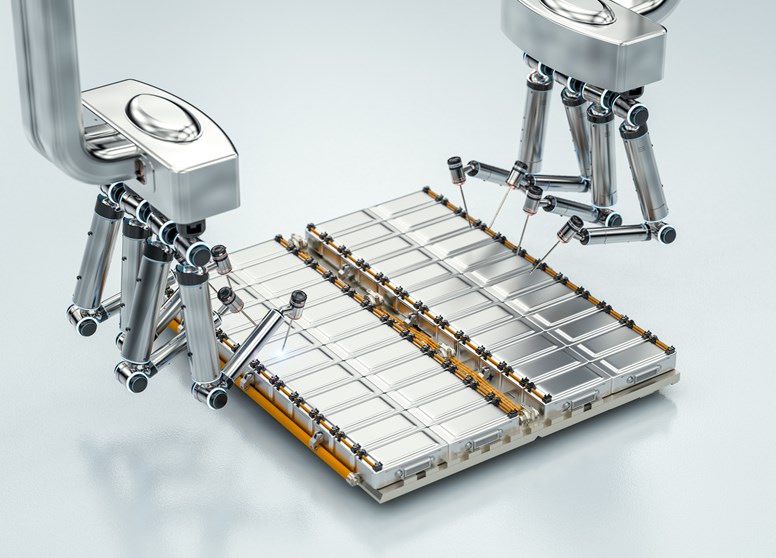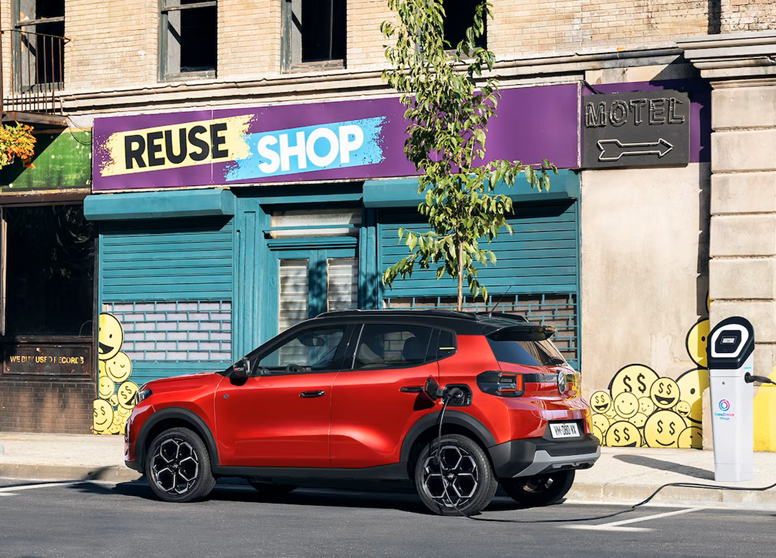1. Data protection at a glance
General information
The following notes provide a simple overview of what happens to your personal data when you visit this website. Personal data is any data by which you can be personally identified. For more detailed information on data protection, please refer to our privacy policy listed below this text.
Data collection on this website
Who is responsible for data collection on this website?
Data processing on this website is carried out by the website operator. You can find his contact details in the imprint of this website.
How do we collect your data?
On the one hand, your data is collected by you providing it to us. This can be, for example, data that you enter in a contact form.
Other data is collected automatically or after your consent when you visit the website by our IT systems. This is mainly technical data (e.g. Internet browser, operating system or time of page view). This data is collected automatically as soon as you enter this website.
What do we use your data for?
Some of the data is collected to ensure error-free provision of the website. Other data may be used to analyze your user behavior.
What rights do you have regarding your data?
You have the right at any time to receive information free of charge about the origin, recipient and purpose of your stored personal data. You also have a right to request the correction or deletion of this data. If you have given your consent to data processing, you can revoke this consent at any time for the future. You also have the right to request the restriction of the processing of your personal data under certain circumstances. Furthermore, you have the right to lodge a complaint with the competent supervisory authority.
For this purpose, as well as for further questions on the subject of data protection, you can contact us at any time at the address given in the imprint.
Analysis tools and third-party tools
When visiting this website, your surfing behavior may be statistically analyzed. This is done primarily with so-called analysis programs.
Detailed information about these analysis programs can be found in the following privacy policy.
2. Hosting and content delivery networks (CDN)
External hosting
This website is hosted by an external service provider (hoster). The personal data collected on this website is stored on the hoster's servers. This may include, but is not limited to, IP addresses, contact requests, meta and communication data, contract data, contact details, names, website accesses and other data generated via a website.
The hoster is used for the purpose of fulfilling contracts with our potential and existing customers (Art. 6 para. 1 lit. b DSGVO) and in the interest of a secure, fast and efficient provision of our online offer by a professional provider (Art. 6 para. 1 lit. f DSGVO).
Our hoster will only process your data to the extent necessary to fulfill its service obligations and follow our instructions regarding this data.
We use the following hoster:
Kinsta Inc.
9 E. Loockerman St., Suite 311
Dover, DE 19901
3. General notes and obligatory information
Data protection
The operators of these pages take the protection of your personal data very seriously. We treat your personal data confidentially and in accordance with the statutory data protection regulations and this data protection declaration.
When you use this website, various personal data are collected. Personal data is data with which you can be personally identified. This privacy policy explains what data we collect and what we use it for. It also explains how and for what purpose this is done.
We would like to point out that data transmission on the Internet (e.g. when communicating by e-mail) can have security gaps. Complete protection of data against access by third parties is not possible.
Note on the responsible office
The responsible party for data processing on this website is:
SVOLT Energy Technology (Europe) GmbH
Amelia-Mary-Earhart-Strasse 17
60549 Frankfurt am Main
Phone: +49 (0) 69 4699 2724
E-mail: info@SVOLT-eu.com
Responsible entity is the natural or legal person who alone or jointly with others determines the purposes and means of the processing of personal data (e.g. names, e-mail addresses, etc.).
Duration of storage
Unless a more specific storage period has been specified within this data protection declaration, your personal data will remain with us until the purpose for the data processing no longer applies. If you assert a legitimate request for deletion or revoke your consent to data processing, your data will be deleted unless we have other legally permissible reasons for storing your personal data (e.g. retention periods under tax or commercial law); in the latter case, the data will be deleted once these reasons no longer apply.
Note on data transfer to the USA
Among other things, tools from companies based in the USA are integrated on our website. If these tools are active, your personal data may be transferred to the US servers of the respective companies. We would like to point out that the USA is not a safe third country in the sense of EU data protection law. US companies are obliged to hand over personal data to security authorities without you as a data subject being able to take legal action against this. It can therefore not be ruled out that US authorities (e.g. intelligence services) process, evaluate and permanently store your data located on US servers for monitoring purposes. We have no influence on these processing activities.
Revocation of your consent to data processing
Many data processing operations are only possible with your express consent. You can revoke consent you have already given at any time. The legality of the data processing carried out until the revocation remains unaffected by the revocation.
Right to object to data collection in special cases and to direct marketing (Art. 21 DSGVO).
IF DATA PROCESSING IS CARRIED OUT ON THE BASIS OF ART. 6 ABS. 1 LIT. E OR F DSGVO, YOU HAVE THE RIGHT TO OBJECT TO THE PROCESSING OF YOUR PERSONAL DATA AT ANY TIME FOR REASONS ARISING FROM YOUR PARTICULAR SITUATION; THIS ALSO APPLIES TO PROFILING BASED ON THESE PROVISIONS. THE RESPECTIVE LEGAL BASIS ON WHICH PROCESSING IS BASED CAN BE FOUND IN THIS PRIVACY POLICY. IF YOU OBJECT, WE WILL NO LONGER PROCESS YOUR PERSONAL DATA CONCERNED UNLESS WE CAN DEMONSTRATE COMPELLING LEGITIMATE GROUNDS FOR THE PROCESSING WHICH OVERRIDE YOUR INTERESTS, RIGHTS AND FREEDOMS, OR THE PROCESSING IS FOR THE PURPOSE OF ASSERTING, EXERCISING OR DEFENDING LEGAL CLAIMS (OBJECTION UNDER ARTICLE 21(1) DSGVO).
IF YOUR PERSONAL DATA ARE PROCESSED FOR THE PURPOSE OF DIRECT MARKETING, YOU HAVE THE RIGHT TO OBJECT AT ANY TIME TO THE PROCESSING OF PERSONAL DATA CONCERNING YOU FOR THE PURPOSE OF SUCH MARKETING; THIS ALSO APPLIES TO PROFILING INSOFAR AS IT IS RELATED TO SUCH DIRECT MARKETING. IF YOU OBJECT, YOUR PERSONAL DATA WILL SUBSEQUENTLY NO LONGER BE USED FOR THE PURPOSE OF DIRECT MARKETING (OBJECTION PURSUANT TO ARTICLE 21 (2) OF THE GERMAN DATA PROTECTION ACT).
Right of appeal to the competent supervisory authority
In the event of violations of the GDPR, data subjects shall have the right to lodge a complaint with a supervisory authority, in particular in the Member State of their habitual residence, their place of work or the place of the alleged violation. The right of appeal is without prejudice to any other administrative or judicial remedy.
Right to data portability
You have the right to have data that we process automatically on the basis of your consent or in performance of a contract handed over to you or to a third party in a common, machine-readable format. If you request the direct transfer of the data to another responsible party, this will only be done insofar as it is technically feasible.
SSL or TLS encryption
For security reasons and to protect the transmission of confidential content, such as orders or requests that you send to us as the site operator, this site uses SSL or TLS encryption. You can recognize an encrypted connection by the fact that the address line of the browser changes from "http://" to "https://" and by the lock symbol in your browser line.
If SSL or TLS encryption is activated, the data you transmit to us cannot be read by third parties.
Information, deletion and correction
Within the framework of the applicable legal provisions, you have the right at any time to free information about your stored personal data, its origin and recipient and the purpose of data processing and, if necessary, a right to correction or deletion of this data. For this purpose, as well as for further questions on the subject of personal data, you can contact us at any time at the address given in the imprint.
Right to restriction of processing
You have the right to request the restriction of the processing of your personal data. To do this, you can contact us at any time at the address given in the imprint. The right to restriction of processing exists in the following cases:
- If you dispute the accuracy of your personal data stored by us, we usually need time to verify this. For the duration of the review, you have the right to request the restriction of the processing of your personal data.
- If the processing of your personal data happened/is happening unlawfully, you can request the restriction of data processing instead of deletion.
- If we no longer need your personal data, but you need it to exercise, defend or assert legal claims, you have the right to request restriction of the processing of your personal data instead of erasure.
- If you have lodged an objection pursuant to Art. 21 (1) DSGVO, a balancing of your and our interests must be carried out. As long as it has not yet been determined whose interests prevail, you have the right to request the restriction of the processing of your personal data.
If you have restricted the processing of your personal data, this data - apart from its storage - may only be processed with your consent or for the assertion, exercise or defense of legal claims or for the protection of the rights of another natural or legal person or for reasons of an important public interest of the European Union or a Member State.
4. Data collection on this website
Cookies
Our internet pages use so-called "cookies". Cookies are small text files and do not cause any damage to your terminal device. They are stored either temporarily for the duration of a session (session cookies) or permanently (permanent cookies) on your terminal device. Session cookies are automatically deleted at the end of your visit. Permanent cookies remain stored on your end device until you delete them yourself or until they are automatically deleted by your web browser.
In some cases, cookies from third-party companies may also be stored on your terminal device when you enter our site (third-party cookies). These enable us or you to use certain services of the third-party company (e.g. cookies for processing payment services).
Cookies have various functions. Many cookies are technically necessary, as certain website functions would not work without them (e.g. the shopping cart function or the display of videos). Other cookies are used to evaluate user behavior or display advertising.
Cookies that are necessary to carry out the electronic communication process (necessary cookies) or to provide certain functions that you have requested (functional cookies, e.g. for the shopping cart function) or to optimize the website (e.g. cookies to measure the web audience) are stored on the basis of Art. 6 (1) lit. f DSGVO, unless another legal basis is specified. The website operator has a legitimate interest in storing cookies for the technically error-free and optimized provision of its services. If consent to the storage of cookies has been requested, the storage of the cookies in question is based exclusively on this consent (Art. 6 para. 1 lit. a DSGVO); consent can be revoked at any time.
You can set your browser so that you are informed about the setting of cookies and only allow cookies in individual cases, exclude the acceptance of cookies for certain cases or in general and activate the automatic deletion of cookies when closing the browser. If cookies are deactivated, the functionality of this website may be limited.
Insofar as cookies are used by third-party companies or for analysis purposes, we will inform you separately about this within the scope of this data protection declaration and, if necessary, request your consent.
Server log files
The provider of the pages automatically collects and stores information in so-called server log files, which your browser automatically transmits to us. These are:
browser type and browser version
Operating system used
referrer URL
Host name of the accessing computer
Time of the server request
IP address
This data is not merged with other data sources.
The collection of this data is based on Art. 6 para. 1 lit. f DSGVO. The website operator has a legitimate interest in the technically error-free presentation and optimization of its website - for this purpose, the server log files must be collected.
Contact form
If you send us inquiries via the contact form, your data from the inquiry form, including the contact data you provided there, will be stored by us for the purpose of processing the inquiry and in case of follow-up questions. We do not pass on this data without your consent.
The processing of this data is based on Art. 6 (1) lit. b DSGVO, if your request is related to the performance of a contract or is necessary for the implementation of pre-contractual measures. In all other cases, the processing is based on our legitimate interest in the effective processing of the requests addressed to us (Art. 6 (1) (f) DSGVO) or on your consent (Art. 6 (1) (a) DSGVO) if this has been requested.
The data you enter in the contact form will remain with us until you request us to delete it, revoke your consent to store it, or the purpose for storing the data no longer applies (e.g. after we have completed processing your request). Mandatory legal provisions - in particular retention periods - remain unaffected.
Inquiry by e-mail, telephone or fax
If you contact us by e-mail, telephone or fax, your inquiry including all resulting personal data (name, inquiry) will be stored and processed by us for the purpose of processing your request. We do not pass on this data without your consent.
The processing of this data is based on Art. 6 (1) lit. b DSGVO, if your request is related to the performance of a contract or is necessary for the implementation of pre-contractual measures. In all other cases, the processing is based on our legitimate interest in the effective processing of the requests sent to us (Art. 6 (1) (f) DSGVO) or on your consent (Art. 6 (1) (a) DSGVO) if this has been requested.
The data you send to us via contact requests will remain with us until you request us to delete it, revoke your consent to store it, or the purpose for storing the data no longer applies (e.g. after your request has been processed). Mandatory legal provisions - in particular legal retention periods - remain unaffected.
5. Plugins and tools
YouTube with enhanced data protection
This website embeds videos of YouTube. The operator of the pages is Google Ireland Limited ("Google"), Gordon House, Barrow Street, Dublin 4, Ireland.
We use YouTube in the extended data protection mode. According to YouTube, this mode means that YouTube does not store any information about visitors to this website before they watch the video. However, the transfer of data to YouTube partners is not necessarily excluded by the extended data protection mode. Thus, YouTube - regardless of whether you watch a video - establishes a connection to the Google DoubleClick network.
As soon as you start a YouTube video on this website, a connection to YouTube's servers is established. This tells the YouTube server which of our pages you have visited. If you are logged into your YouTube account, you enable YouTube to assign your surfing behavior directly to your personal profile. You can prevent this by logging out of your YouTube account.
Furthermore, YouTube can save various cookies on your end device after starting a video or use comparable recognition technologies (e.g. device fingerprinting). In this way, YouTube can obtain information about visitors to this website. This information is used, among other things, to collect video statistics, improve the user experience, and prevent fraud attempts.
If necessary, further data processing operations may be triggered after the start of a YouTube video, over which we have no control.
YouTube is used in the interest of an appealing presentation of our online offers. This represents a legitimate interest within the meaning of Art. 6 para. 1 lit. f DSGVO. If a corresponding consent was requested, the processing is based exclusively on Art. 6 para. 1 lit. a DSGVO; the consent can be revoked at any time.
Font Awesome
This site uses Font Awesome for the uniform display of fonts and symbols. The provider is Fonticons, Inc, 6 Porter Road Apartment 3R, Cambridge, Massachusetts, USA.
When you open a page, your browser loads the required fonts into its browser cache in order to display texts, fonts and symbols correctly. For this purpose, the browser you are using must connect to Font Awesome's servers. This enables Font Awesome to know that your IP address has been used to access this website. The use of Font Awesome is based on Art. 6 para. 1 lit. f DSGVO. We have a legitimate interest in the uniform presentation of the typeface on our website. If a corresponding consent has been requested (e.g. a consent to store cookies), the processing is carried out exclusively on the basis of Art. 6 (1) lit. a DSGVO; the consent can be revoked at any time.
If your browser does not support Font Awesome, a default font will be used by your computer.
Google reCAPTCHA
We use "Google reCAPTCHA" (hereinafter "reCAPTCHA") on this website. The provider is Google Ireland Limited ("Google"), Gordon House, Barrow Street, Dublin 4, Ireland.
The purpose of reCAPTCHA is to verify whether data entry on this website (e.g. in a contact form) is made by a human or by an automated program. For this purpose, reCAPTCHA analyzes the behavior of the website visitor based on various characteristics. This analysis begins automatically as soon as the website visitor enters the website. For the analysis, reCAPTCHA evaluates various information (e.g. IP address, time spent by the website visitor on the website or mouse movements made by the user). The data collected during the analysis is forwarded to Google.
The reCAPTCHA analyses run entirely in the background. Website visitors are not notified that an analysis is taking place.
The storage and analysis of the data is based on Art. 6 para. 1 lit. f DSGVO. The website operator has a legitimate interest in protecting its web offers from abusive automated spying and from SPAM. If a corresponding consent was requested, the processing is based exclusively on Art. 6 para. 1 lit. a DSGVO; the consent can be revoked at any time.









